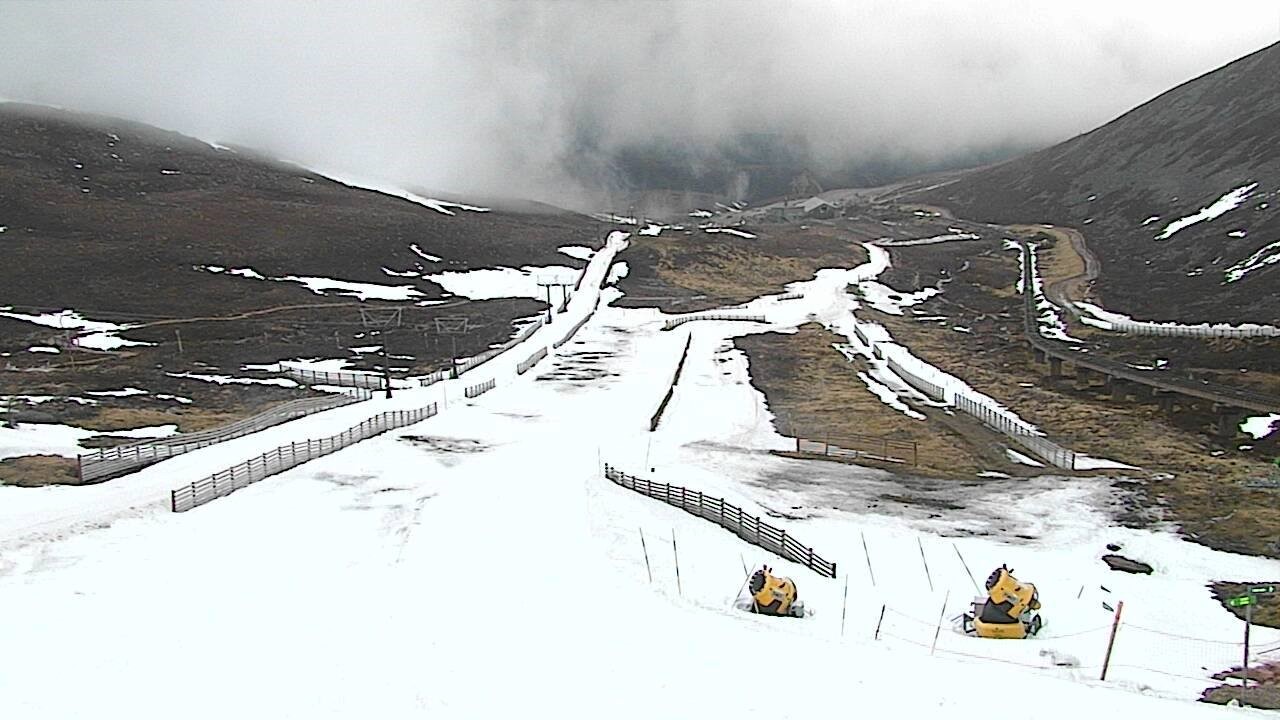
It has always been the case that snow for skiing on the lower slopes of the Cairn Gorm ski area Mountain is a bit hit and miss. While continuous snow lie above the Sheiling mid-station is fairly reliable, below that level it tends to come and go, even in good seasons. That was recognised long ago and artificial snow-making was tried there many years ago. However the technology has moved on significantly since the 1960’s and has taken further leaps forward in the last few years.
The recent history of snow-making on Cairn Gorm began in 2006 with a conversation with the then CEO at which the possibility of installing snow-making on the lower slopes was discussed. At that time, there was no substantive data that could have shown if snow making was possible or not. It was thought likely that it would be too ‘warm’, too wet, too humid and too windy for it to work satisfactorily. That led directly to Winterhighland Ltd installing an Automatic Weather Station on the balcony of the Scottish Ski Club Hut at the foot of the White Lady Piste so that meteorological data could be collected that would either support the case for snow making or not.
Snow cannons require an air temperature of -2C or lower in order for them to operate….the lower the temperature the better they work. After collecting data from the 2007 season it was immediately obvious that there were cold periods, of a long enough duration, to have enabled snow cannons to provide a complete piste from the Sheiling to the Daylodge throughout the season. Of course, a single season of data wasn’t sufficient to ‘prove’ the case so Winterhighland, with the cooperation of the Scottish Ski Club, continued to collect data in subsequent seasons. At the same time, a mathematical regression analysis was done to model the effect on skier days of having a complete piste from the Sheiling to the Daylodge. That model, developed by Winterhighland showed that the increase in the number of skier days [i.e. demand] when skiing was available to the Daylodge was so significant that the cost vs benefit was very positive. It provided the conclusive piece of evidence that led to CairnGorm Mountain obtaining a single snow cannon as a trial. The business then quickly obtained 4 TechnoAlpin T40 cannons.
It’s a matter of regret that CairnGorm Mountain Ltd under Natural Retreats saw fit to remove the Winterhighland Automatic Weather Station from the Scottish Ski Club Hut, prior to the 2017/18 season. A data set that was complete over a 10 year period was broken. The AWS removal was a bizarre act of self harm because the AWS and Webcam set-up were visited by many thousands of users each season. Is it merely coincidence that the CairnGorm Mountain’s share of the Scottish Snowsports market collapsed over the 2017/18 season to an unprecedented low of just 23.6%? The evidence is clear from the market share data and the failure of the hill business last month…CairnGorm Mountain Ltd requires all of the publicity that it can get.
Winterhighland provided Highlands and Islands Enterprise with a copy of the complete data set they had in order to assist them in their deliberations about providing partial grant funding for a Snowfactory trial thereby indicating a willingness to assist. It is to be hoped that a new era of cooperation can now be ushered in and that all parties can work towards the future success of the mountain business with all that will mean for direct employment on the hill and in the wider local community.
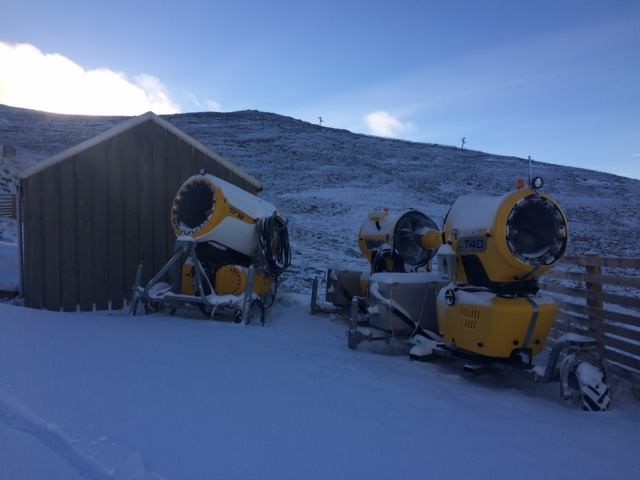
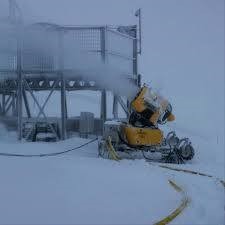
At the beginning of the 2011 season the hill opened with a complete piste to mid station which would not have been possible without the use of snow cannons on the lower Zig Zags. The operator was able to charge the 1000 customers who turned up that weekend £10 more for a ticket than would have been the case if only the Ptarmigan and Ciste areas had been available. £10,000 of additional ticket money in one weekend was significant by itself but also a boost to the case for a planned approach to snow-making on CairnGorm Mountain.
Regrettably, the advancement of snow-making capacity on the hill then stalled due to a combination of poor strategic and operational management. The operations staff made the best use that they could of the limited number of snow cannons at their disposal by moving them around to locations where their use was most productive.
An indication of the usage that was made of the available snow cannons was published by Operations from Cairngorm Mountain on 11 March 2013 when they volunteered that ‘’the 4 cannons have carried out 450 hours of snow-making to date’’ A figure that indicated what could have been done with a greater number of cannons.
The number of cannons on the hill was subsequently increased to 5 when a TechnoAlpin T10 higher volume cannon was acquired. However, the total number was still insufficient to ensure a complete piste from the lower Zig Zags to the Daylodge and snow-making as a consequence could only be done on an ad hoc basis in locations where it was required most.
The CairnGorm Mountain share of the Scottish snowsports market declined sharply in 2014 and did not subsequently recover as snowsports enthusiasts drifted away to other areas where various improvements were being made. In the summer of 2017 the Aviemore Business Association met with James Gibbs from HIE and Fergus Ewing MSP, the Business Minister response. ABA suggested that CairnGorm should obtain a TechnoAlpin snowfactory which could make snow continuously throughout the winter months thereby enabling the piste from Sheiling to Daylodge, which has most influence over demand and ski numbers, to be complete throughout the winter. That discussion led to a TechnoAlpin Snowfactory being obtained on a lease over the 2017/18 winter season. It was trialed for 2 months at Cairn Gorm and then 2 months at the Lecht..
Following the completion of the trials, HIE engaged Hall Aitken, a consultancy firm based in Glasgow, to examine the economic case for snow-making. They looked at the evidence from Cairn Gorm and Lecht as part of their report. The Lecht were overwhelmingly positive and made it clear that they intended to purchase a Snowfactory which would enable them to open for beginners lessons on 1 December 2018. They have, very admirably, achieved that goal. At Cairngorm, the trial did not go so positively. The Hall Aitken report, obtained under FOI, had this to say: ‘’The Trial was inconclusive and the system needs further evaluation from their perspective’’
That conclusion was at odds with the findings from the Lecht and at Glencoe where they had also obtained a TechnoAlpin Snowfactory which they used with success. As a result Glencoe committed to buying one, which they then did and it was used to achieve their goal of limited opening on 1 December 2018.
The fact that CairnGorm Mountain Ltd felt that the system required further evaluation should be taken in the context that the then operator, the Natural Retreats group, didn’t have the capital required to purchase one. Instread their commitment was to obtain planning consent and the subsequent construction of an artificial slope which was to be financed with a loan from HIE. With CairnGorm Mountain Ltd having been placed into the hands of Administrators HIE owe a debt of gratitude to the campaigners who stood firmly against the artificial slope and were instrumental in its being rejected by the CNPA Planning committee. Otherwise at least some of the proposed £4m loan would have been lost. That capital should now be committed to new uplift on the hill.
Since the Autumn, the Funicular railway has been closed due to indeterminate issues with the structure. Engineering investigations are on-going but it does seem unlikely that it will operate over this winter season. Without the Funicular it’s impossible for beginners and early learners to access the learning area outside the Ptarmigan. Even those who can ski will have no way of reaching the mid-mountain uplift if there is no snow lower down. The consequent negative impact on the local economy resulted in HIE making the decision to invest £1m in snow-making equipment. A larger sized TechnoAlpin snowfactory and 8 new snow cannons have been purchased.
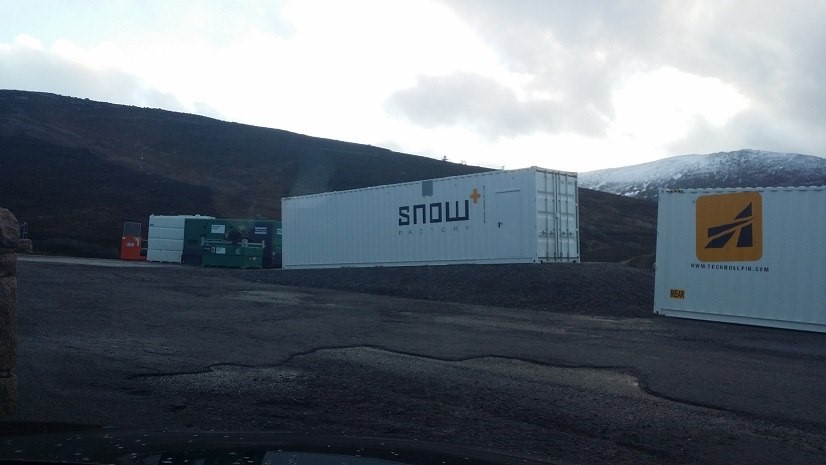
Although this injection of capital equipment will considerably enhance the CairnGorm snowsports offering, it should be remembered that it became necessary due to serial mismanagement by HIE. It has been their strategic failures, over a prolonged period of time, that has led the mountain business to a point where it was critically vulnerable to a single point of failure. The complete reliance on the Funicular railway and the considerable reduction in uplift and catering capacity are down to their irresponsibility. It’s clear that HIE cannot be the public agency that will ensure the future success of the CairnGorm Mountain business.
The snow making machine should enable a beginners’ learning area to be created outside the Daylodge. The cannons should enable surface uplift from the Daylodge is available as well as that crucial Sheiling to Daylodge Piste. It may be the case, however, that it will be the 2019/20 season before the new system can be fully set up to achieve that objective.
There are significant issues to be overcome in respect of the availability of power.
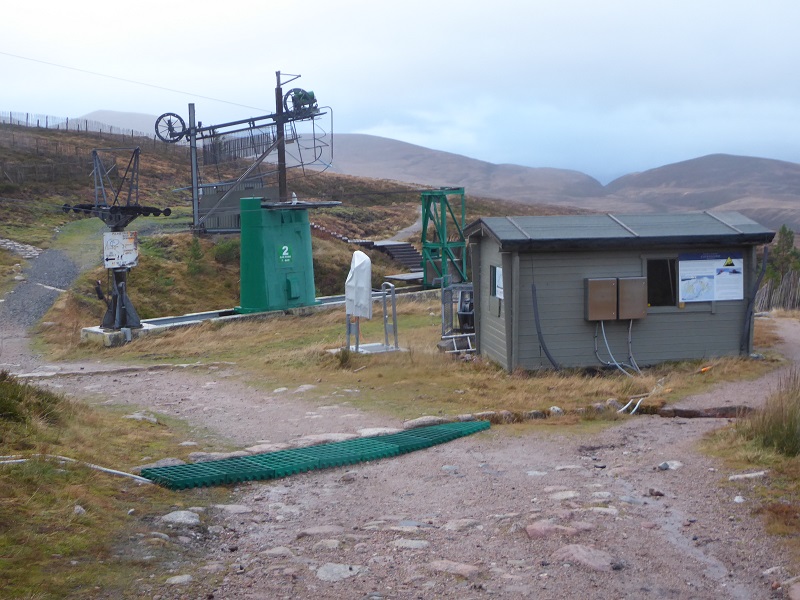
The Snowfactory is to be powered by a diesel generator which is less than environmentally friendly and a dozen cannons will be heavy users of energy. This new snow-making equipment is very welcome and will be a much needed boost to the credibility of Cairngorm as a snowsports destination, into the future. It’s a pity that the 2017/18 trial wasn’t seen as a success at CairnGorm because had it been acted on an increase in the power capacity on the lower mountain could have been installed for this season. As things stand today, SSE will have to be engaged to upgrade the supply which will be very costly.
The case for small scale hydro development in both Coire na Ciste and Coire Cas has now been immeasurably strengthened. The consultant report that CML commissioned from Duncanson engineering and the Hydrologists report commissioned by the Save the Ciste campaign both concluded that hydro generation, in both Coire Cas and Coire na Ciste was very feasible. Sensitive designs with input from environmental groups and other stakeholders would assist with planning consent. The generation of power from a sustainable source is both desirable and makes good economic sense.
There are also difficulties to be overcome with the water supply. The report from Hall Aitken had this ‘’ Water supply Issues created problems’’
It is understood these stem from the granite dust that is suspended in the burn water which is extremely difficult to remoe. Some of it was getting through the filters on the intake pipe and choking the snowfactory filters. The operations team have done their best to remove ‘foreign bodies’ from the water by creating a number of ‘sump points’ in the burn such as those evident at the foot of the Gunbarrel and adjacent to the Sunkid Rope Tow.
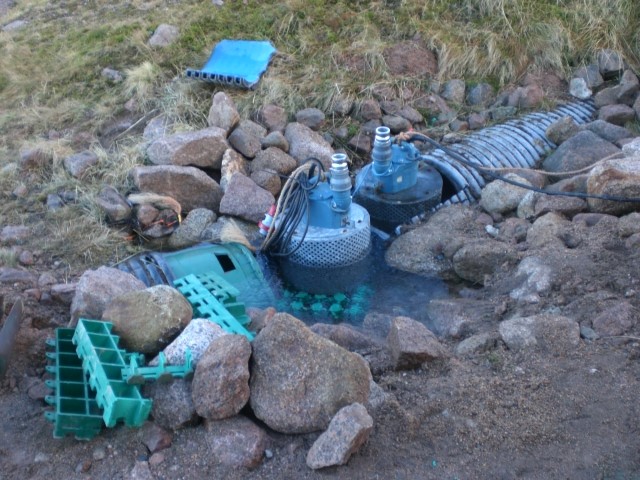
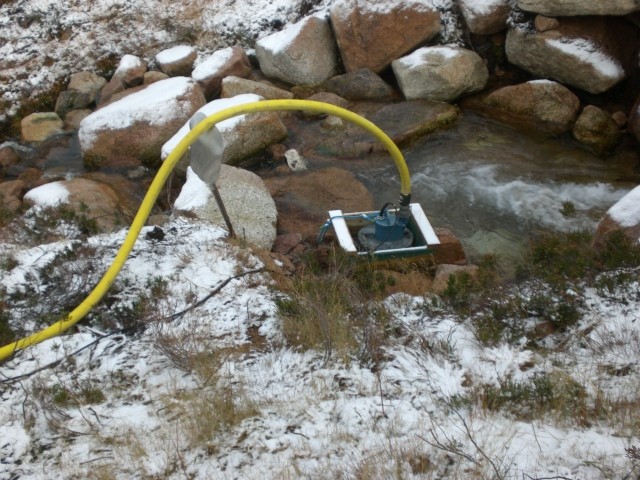
A permanent solution will be necessary to avoid ongoing issues and the unsightly mess. With a dramatic increase in the snow-making capacity HIE must provide whatever capital is required to install appropriate filtration.
It now looks likely that the snow-making capacity, that has long been advocated by Winterhighland and others, will now be available on CairnGorm. We hope that the Snowfactory and Cannons will, in due course, be located at positions that make it easy for the operators to ensure Sheiling to Daylodge skiing throughout the season.
A start to turning the business around has been made and the outlook is promising, at long last. We now need a comprehensive plan for downhill skiing infrastructure on the hill.
Climate change should be central to new development. Is it right to use public money to pay for diesel burning snow cannon in the National Park?
Small scale hydro schemes are increasingly under examination. At many sites they are being adjudged to cause harm to living systems.
A 2-3MW wind turbine on the Ciste car park site could power snow making and, if publicly owned could finance local economic development that corresponded to the imperative to address climate change.